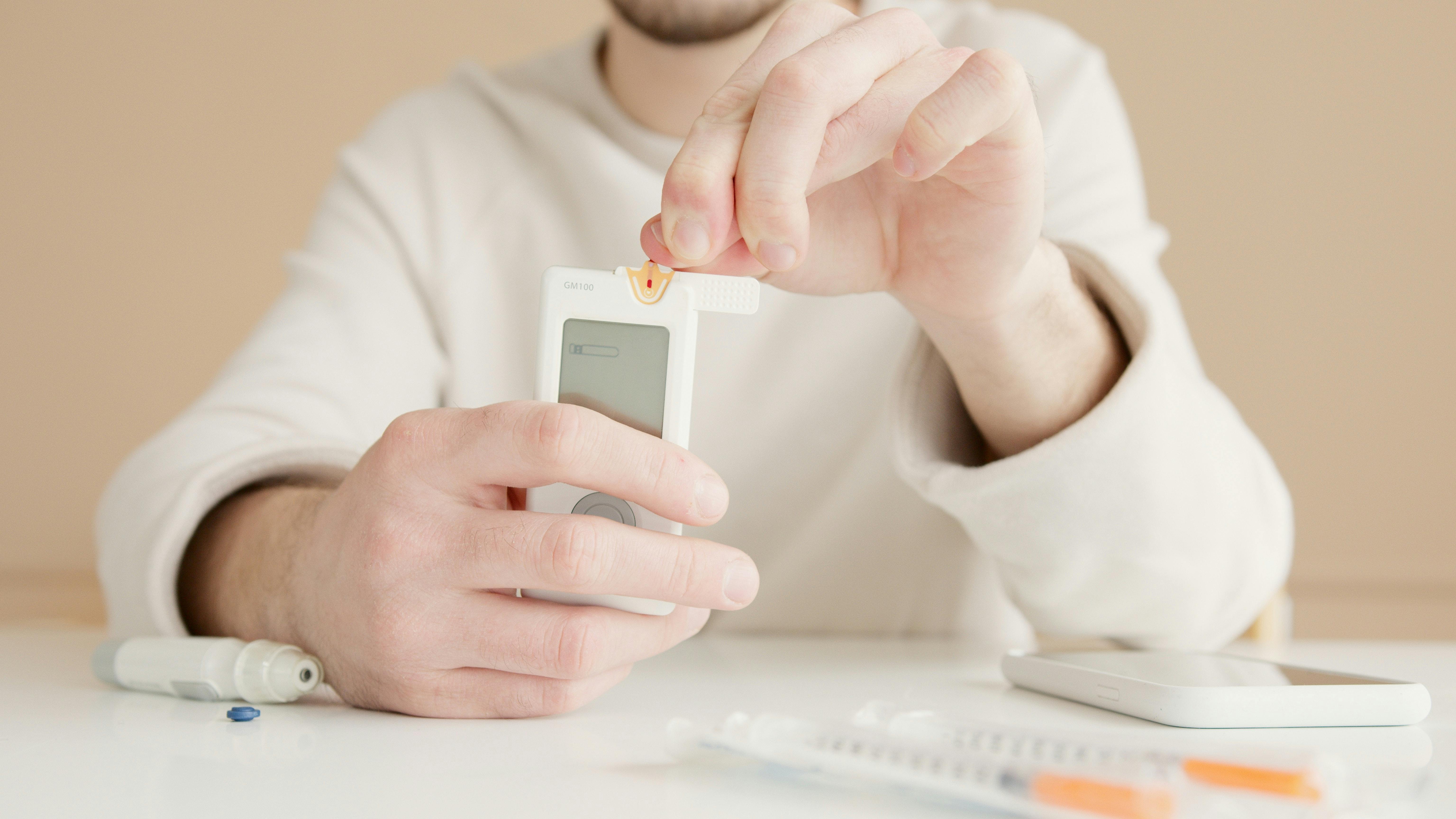What's the difference between type 1 and type 2 diabetes?

For your body to be able to carry out any of its normal functions, the cells within it need energy. Much of your body’s energy is supplied by the sugar, glucose, which is acquired from your diet. When it's not regulated properly, it leads to diabetes — with type 1 and type 2 diabetes being the most common types. But how do they differ?
Blood sugar and insulin
When in the blood we might refer to it as blood sugar, as it's carried around your body in the bloodstream. Cells use the glucose circulating in the bloodstream as a source of energy.
The absorption of glucose is regulated via a hormone called insulin.
In normal operation, the insulin is made in the pancreas and released when blood-sugar receptors signal that our levels are raised. The insulin forces the cells in your body to absorb more glucose.
The absorption of glucose into the cells lowers the blood sugar level and keeps it at a steady balance, also known as glucose homeostasis. In short, diabetes interrupts the normal functions associated with this process.
If our blood sugar levels are low, the secretion of insulin is inhibited and instead, glucagon is released by pancreatic alpha cells. Glucagon is a hormone that acts in the liver to increase our blood sugar levels.
Both type 1 and 2 diabetes are associated with higher than the usual blood sugar levels, but their causes and symptoms differ.
You can check your blood sugar control by using an at-home HbA1c blood test.
The difference between type 1 and type 2 diabetes
Type 1 diabetes:
- your body completely lacks insulin
- normally, this is due to the immune system attacking the production site of insulin until your body is no longer able to produce it. This creates the need for insulin dependency by way of injection
Type 2 diabetes:
- your body has a low level of insulin or can't use the insulin in the correct way. This is called insulin resistance.
Type 1 Diabetes
Type 1 diabetes is an autoimmune disease and is classically identified in childhood but can develop at any time, especially if there is a genetic marker present. Type 1 diabetes accounts for around 10% of all cases of diabetes, but its worldwide prevalence is growing.
Type 1 is characterised by the absence of insulin in your body. Pancreatic ᵝ (beta) cells usually produce insulin. The destruction and elimination of these cells in type 1 diabetes ultimately lead to no insulin being produced at all.
How does this happen? Your body’s defence system works by first identifying what the invader looks like, it then uses what are essentially mirror cells to transform themselves and look exactly like the invader (viruses and infections).
These mirror cells then, in effect, travel around your body, shouting to the killer cells of the immune system. In effect, these cells are flagged to be destroyed by the killer cells. This is, of course, not precisely what takes place, but for a simplified explanation, it’s easy to imagine.
When this system works right, it’s great and can save us from disease, but if it goes wrong, then rather than cure disease, it can cause it.
This is what happens in the case of type 1A diabetes. In this form, the beta cells are wrongly identified as an invader in a move known as a cell-mediated autoimmune attack.
During beta cell destruction, an inflammatory response is initiated, and progressive destruction leads to a loss of insulin-secretory reserves as special proteins known as antibodies identify and destroy the mistakenly targeted cells.
Because of the death of their beta cells, type 1 diabetics have to compensate for this loss by injecting themselves with insulin.

Type 2 diabetes
The pathogenesis of type 2 diabetes is complicated, particularly as patients can present with differing degrees of insulin resistance. The disease can be due to a combination of genetic and environmental factors and is the most common type in the UK. The disease is characterised by either your body being unable to make enough insulin or your body unable to use the insulin which is produced effectively.
Type 2 diabetes doesn’t attack the beta cells, so it's not an autoimmune disease. The ineffectiveness of insulin (insulin resistance) is compensated by your body producing more of the hormone, but it can’t always produce enough. As the pancreatic beta cells are put under increasing pressure, the increased production of insulin can destroy them, stopping the production of insulin. This is a beta-cell failure. Over a prolonged period of time, it's possible to find yourself in a situation similar to that of a type 1 diabetic.
The changes in insulin secretion cause hyperglycaemia (high blood sugar) and eventually the need for insulin dependence. Obesity is a strong risk factor for becoming insulin resistant, alongside a lack of physical activity. Insulin action can be modulated by fat and muscle cells due to the origination of hormones, cytokines and metabolic fuels within these cells.
Kahn, S. E., Cooper, M. E., & Del Prato, S. (2014). Pathophysiology and treatment of type 2 diabetes: perspectives on the past, present, and future.Lancet (London, England),383(9922), 1068–1083. https://doi.org/10.1016/S0140-6736(13)62154-6